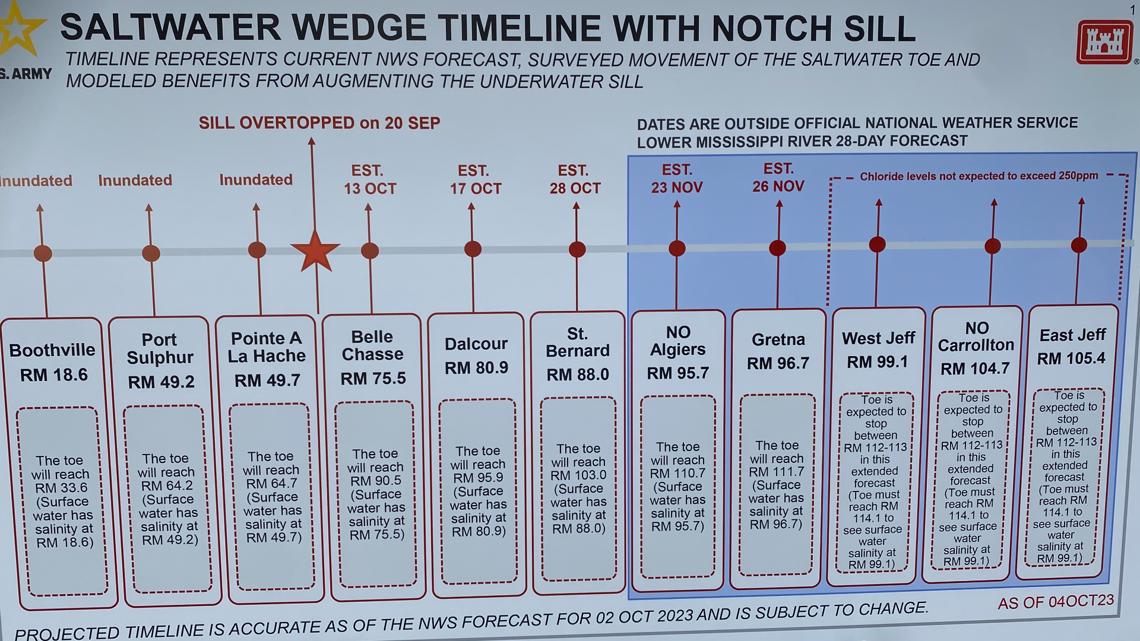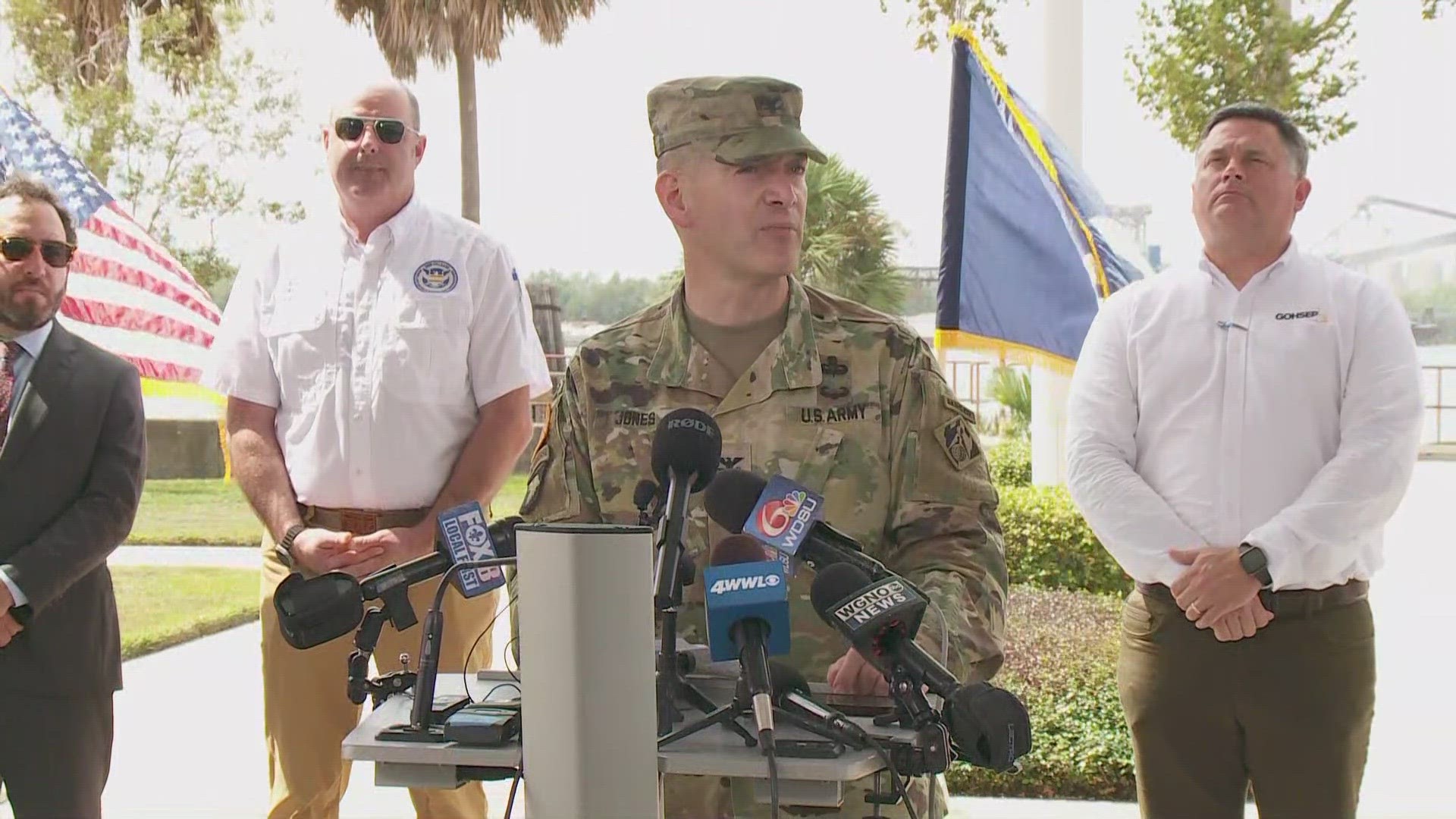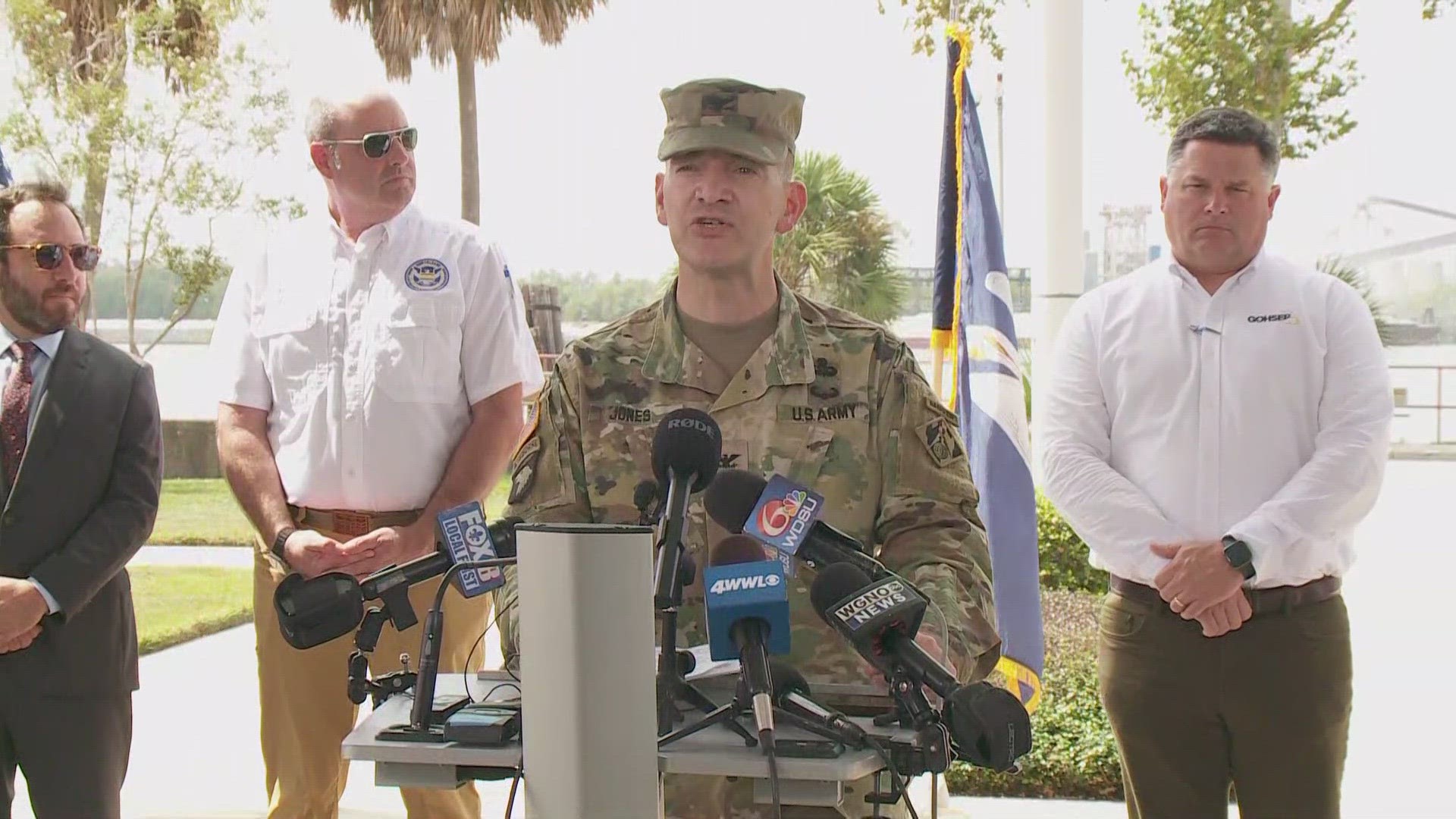NEW ORLEANS — On Thursday afternoon, the U.S. Army Corps of Engineers, New Orleans District and the Governor's Office of Homeland Security & Emergency Preparedness provided an updated information regarding the saltwater intrusion on the Mississippi River.
Colonel Cullen Jones said that at the projected timeline has shifted for the better due to strategic work to heighten the underwater sill already in place.
"We are ahead of schedule," said Jones regarding combating the advancement of the saltwater wedge with the heightened sill which is 62-percent complete and projected to be finished by Oct. 12, a day before the wedge is expected to reach Belle Chasse in Plaquemines Parish. "Our daily surveys show the saltwater that overtops the sill has less density and salinity than that behind the wedge."
Col. Jones also said that new flow forecasts from the National Weather Service has also aided in slowing down the wedge's intrusion upriver.
"We've had better than forecasted flows through September," he explained. "That's given us additional time."
Belle Chasse is expected to be impacted on Oct. 13, Dalcour on Oct. 17 and St. Bernard on Oct. 28.
New timelines based on the NWS' latest 28-day flow forecast for Lower Mississippi predict impacts to Algier and Gretna now delayed until Nov. 23 and Nov. 26 respectively.
The toe of the saltwater wedge has remained basically stationary for about 10 days – 20-miles south of New Orleans.
According to the Corps – the river deepens to a depth of 120 feet at that location. And – work now being done to raise an underwater barrier near there – another 25-feet – appears to be already slowing the upriver movement of the saltwater.


"Generally, we will still see impacts to both Plaquemines and Saint Bernard Parish in the month of October, but we also see delayed impacts to the Algiers and Gretna facilities in late November. Currently through our extended forecast through the month of November," said Col. Jones. "We see the potential for no chloride impacts affecting West Jefferson, Carrollton and East Jefferson Water treatment facilities."
Jefferson Parish is already building a pipeline on the West Bank to carry fresh water from upriver – to the treatment plant in Marrero.
JP President Cynthia Lee-Sheng said the parish will continue building the pipeline despite the new timelines.
"We are going to go ahead and lay-out the full system for the first half of that (15-mile) run to be ready in case something happens," she said. "And then to get the corps' approval for the full run, the 15 miles, just to be ahead of us."
The Army Corps of Engineers is continuing to provide technical assistance to both Jefferson and Orleans parishes will continue daily river surveys to monitor the toe of the saltwater wedge and the performance of the augmented sill.
The corps will provide weekly updates based on the latest NWS 28-day forecasts every Thursday for the public's planning, readiness and response efforts.
Watch the complete press conference in the video players below:
► Get breaking news from your neighborhood delivered directly to you by downloading the new FREE WWL-TV News app now in the IOS App Store or Google Play.


